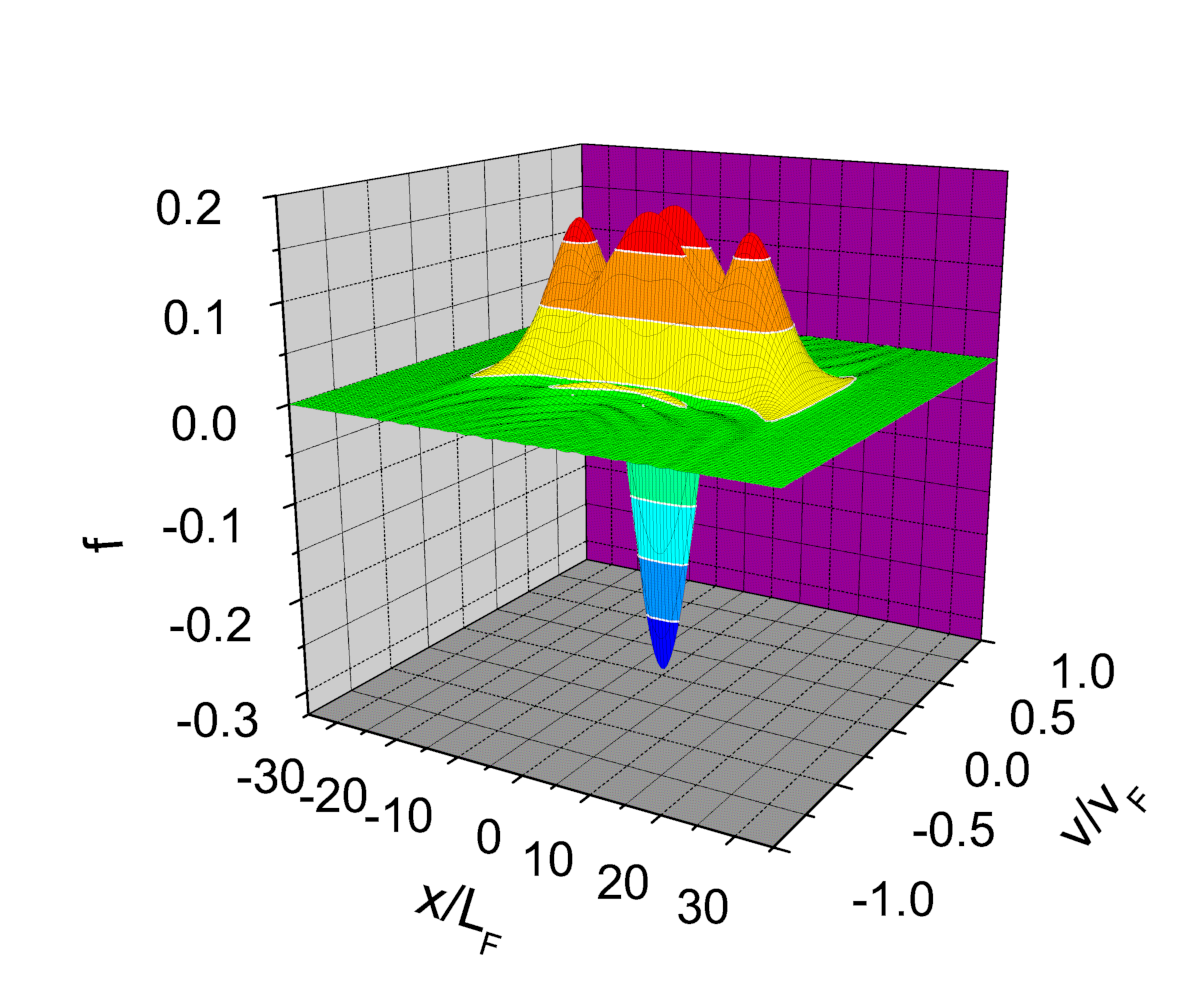Wigner functions and quantum hydrodynamics
The Q-Dyno group has a longstanding experience on the self-consistent electron dynamics in optically excited nanostructures using quantum hydrodynamics and phase-space methods (Wigner and Vlasov). Examples of systems investigated in our group include ultrafast electron transport in thin metal films, electronic breathing modes in metallic nanoparticles and nanoshells, and plasmonic excitations in fullerene molecules. We have extended the Wigner and quantum hydrodynamic approaches to include the electronic spin in a fully quantum manner. The resulting models are used to study spin-dependent effects in polarized electron gases and spin current generation in magnetic and non-magnetic nano-objects.
Quantum-classical hybrids

This is a collaborative project with Dr. Cesare Tronci (University of Surrey, UK), funded by a Royal Society grant.
Quantum mechanics is the fundamental theory that rules the way nature works at microscopic scales. Nevertheless, a fully quantum description is often a fierce challenge, both for analytical developments and numerical calculations, especially for objects containing as many as hundreds or thousands of particles. In those cases, it may be necessary to separate the system under study into various subsystems, some of which are treated classically and some quantum mechanically (for instance, a quantum object immersed in a solution of water molecules described classically). But coupling a quantum system to a classical one is no easy task, as their descriptions are based on entirely different mathematical tools – trajectories of point-like particles for classical systems vs. wave functions for quantum ones.
Here, we will address this problem from the perspective of the Koopman-von Neumann theory (KvN). The KvN theory is a representation of classical mechanics that uses a mathematical formalism identical to that of quantum mechanics (Hilbert spaces, self-adjoint operators, etc.). Obviously, this makes it an ideal candidate to represent hybrid systems that are partly quantum and partly classical. In particular, we will study the hybrid dynamics of a quantum spin coupled to a classical magnetic moment. This may be later extended to the case of a quantum spin evolving in a bath of classical magnetic moments, which could model, for instance, a molecular magnet interacting with a network of magnetic nanoparticles
Selected papers
